[Emily Auerbach, Professor, Department of English, UW-Madison]
Good afternoon.
I’m Emily Auerbach, and I welcome you to Eloquence and Eminence: Emeritus Faculty Lectures.
We are in our 23rd year of offering this series at UW Madison featuring professors who are retired and are known for both their teaching excellence and their scholarly expertise.
We are sponsored by the Division of Continuing Studies, the Institute on Aging, and the Anonymous Committee.
Our speaker today, for a talk entitled “Christianity in India: From Beginnings to the Present” is Robert Frykenberg, UW Madison professor emeritus of history and South Asian studies.
Professor Frykenberg was born in India in 1930, and he received his PhD at the University of London. He joined the UW-Madison faculty in 1962 and played a major role in building and chairing the Department of South Asian Studies.
He also founded the International Wisconsin Conference on South Asian Studies attracting over 500 participants.
His publications are many. Two notable ones are “History and Belief: The Foundations of Historical Understanding” and “Christianity in Indian: From Beginnings to the Present,” which was published by the University of Oxford Press in 2008.
A book of essays about India, assembled in honor of Professor Robert Frykenberg, refers to him as “arguably the historian most responsible for promoting studies of intercultural and interreligious interactions in the South Asian context.”
A pioneer of bottoms-up and Indo-centric approaches in India’s history, he has stressed this perspective throughout his long and distinguished career.
Please join me in welcoming for a talk on “Christianity in India” Professor emeritus Robert Frykenberg.
[applause]
[Professor Emeritus Robert Frykenberg, Department of History, UW-Madison]
Thank you very much.
It is both a pleasure and a privilege to be able to talk to you this afternoon about this subject about which I have been much preoccupied for the last 30 years or so.
There are a number of misconceptions with respect to Christianity in India. I won’t try to detail them all, but I will mention two. And I think it’s good to start with those two just to sort of clear the air.
One of the – one very common misconception is that Christianity in India is recent, and the second one that’s related to this is that it has been an alien imposition upon India. I want to see if I can do what I can to dispel this notion a little bit.
The the origins of of Christianity in India go back 2,000 years. Jewish origins in India go back even further. But, in any case, there’s a common belief, it’s a canonical belief among Thomas Christians, who are the oldest Christian community in India, that Christianity was brought to India by the apostle Thomas in the year 1582. And there is a fair amount of of of plausibility given to this but no proof. And, of course, Thomas Christians like to say, “Well, give us a proof for Peter going to Rome and we’ll show you the proof of Thomas coming to India.”
But, in any case, I want to, this afternoon, talk about Christianity in India in terms of five stages or five stories and see if I can get through these in the time that I have before us.
And the first of these is to talk about these Thomas Christians and their arrival in India. Not just their apostolic origins, but various forms of corroborative kinds of evidence that’s there. There are ancient epic poems. There are oral traditions. And we know from these that there were seven villages that were that were the places of his, that he settled. Cranganore, probably more properly Kodungallur, was the ancient seaport used in the in the Arabian Sea, sometimes called Muziris, was the main place where he’s supposed to have arrived. But Kottayam, Angamaly, and many other places.
And I’ll pause here just to simply say occasionally I’m going to have to resort to some Indian words and Indian places, and I hope this doesn’t get too difficult.
But, in any case, this arrival has been pretty well established in the sense that they were there at least by the second century, if not earlier. And we have inscriptions, stone inscriptions, copper plate inscriptions, and these and these epics to go by.
And then the beginnings of arrivals of refugees who come from the Middle East from persecution. Particularly earliest big persecution from which they fled was not just from the Parthians but from the Sasanian Empire when there was a time of great persecution.
The Church of the East, which had its headquarters near Babylon, Seleucia-Ctesiphon. There was great persecution going on in the year 340, 330-340, 345, in which several hundred bishops were killed, and, at that particular time, a merchant warrior by the name of Thomas Kinayi, who worked and regularly went back and forth to the west coast of India down in the far of the western Ghat area, there where it says Cochin, just north of there, arranged with a Perumal, the emperor, for a group of refugees to be brought there in the year 345. And this has been fairly well established by archaeology and by work the work the work of a scholar by the name of Jacob Kollaparambil.
And this consisted of 72 families, or about 400 people, two priests or kattanars, and a bishop. And they got their blessings from the bishop in Jerusalem at that time. And they arrived and and at the time that they came, the Perumal arranged for them to settle on the south bank of the Periyar River. And, in fact, Kollaparambil’s book is entitled “The Babylonian Origins of the Southists of the Thomas Christians of South India.”
And there they settled, and they were allowed to settle in an area, according to the text, that a she elephant could wander for two days.
Which is a very interesting story.
And this became a very elite community, and they are known as the Malankara Nazranis. And they distinguish themselves as being Southist, as distinct from the Northists north of the Periyar River who are an older community but who did not have as an elite status. And one of the reasons for the elite status that they held is that they claimed to be Hebrew Christians, and they also claimed royal lineage and the lineage of David.
Whether this is true or not, whatever the case, they became an elite community on the west coast, which intermingled with and worked kind of the same kind of status as Brahmins and Nairs and people who held great estates. And there were about 40 or 50 settlements of these. And for a while, after the year 1000 and the 1200s, 1300s, there these were even knit together into a sort of loose kingdom within a kingdom under the capital of Madhavpuram. And this is the condition that they were in about the time the Portuguese arrived.
One of the interesting texts relating to the Thomas Christians is the Acts of Thomas. This also indicates that Thomas came, but it’s a fanciful tale. But it is in in in the idiom of of of the east and in fact gives a kind of poetic presentation of his going. But where he goes to is in the Punjab, and, according to the text, a king Gondophares, a Bactrian king, invited him to come there and build his palace.
According to the text, he went there, the king said I’m going away on pilgrimage, here is the money, build a palace. The king went away, Thomas, the apostle, noticed that there were many poor people, many hungry people, many suffering people, and he expanded all of his money on this. And when the king came back, he was very angry when he said, “Where is my palace? I can’t see it.” And Thomas said, “Well, I’ve built a palace for you in Heaven.”
[laughs]
And the story goes on.
There are many, many parts of this. The question is, “Was there ever a Gondophares?” About 200 years ago, a a a cache of coins were found, a hoard of coins was found, in the Punjab. And in that cache of coins was the coin of King Gondophares, who reigned from around the year 48 to 55 or thereabouts.
So, we know there was this king, and one of my graduate students actually -presented presented me with this coin.
So, this community became very Indianized. You can almost say that they were Indian or Hindu in culture, they were Christian in doctrine, and they were Syrian in their ecclesiology. Almost all the Thomas Christians looked to the near east and to the Mesopotamia to Babylon and to Antioch, but particularly to Babylon, and for their for their prelates, their high metrons, as they were called.
And this continued to be so. The the Church of the East didn’t have a pope, it had the catholicos. It wasn’t called a patriarch. It was called a catholicos. And this person would in fact ordain priests and bishops who were to come to India in those early years.
This community is still extremely strong in India. And, in fact, you’ll find bits and pieces of this community in every other Christian community as well as as well as their own. The the -the most wealthy live in their great palaces, their terravods, and their estates.
They are to be found among Pentecostals, among Catholics. They are very strong among the Catholics and so forth. In fact, the story of their relationship with the Catholics is a fairly fraught story and brings me to the second of these waves of of of growth of Christian – Christianity in India.
This is with the coming of Vasco da Gama in 1498. He achieved what Columbus had set out to do. He reached India.
And he was met on the west coast of Andia, near of of Africa near near Mombasa by two Indian Christian pilots or sailors, seamen, who offered to guide him into the shore of India and helped him to get across to Cana to Calicut where he first landed. And we know about his earliest relationships there with the Samudra Raja. The Portuguese corrupted the word into Zamorin, a Samudra Raja, the lord of the sea who was the ruler of that city state.
But, of course, there were many Moors, there were many Arab sailors there, many Muslims who resented the the coming of the Portuguese and tried to undermine their position in Calicut. And very soon an incident occurred in which several Portuguese were killed, and then Vasco da Gama’s fleet bombarded the port and difficult relations went on from that time forward as the Portuguese established themselves on the west coast of India.
Now, it’s interesting that Sanjay Subrahmanyam, the authority on the Portuguese in India, wrote a biography of of Vasco da Gama in which he describes how they have quite recently found the texts of the reports of four metrons, four bishops, who were on hand on the shore and described all of the events the events I’m talking about vividly from an Indian perspective on the events that occurred there.
Now, of course, the Portuguese eventually carve out for themselves a little kingdom, a city state at Goa and begin to throw their weight across that part of the of the Arabian Sea, try to dominate the trade of the east. And this brings them into sharp into relationships with the Thomas Christians, which, for the first 40 or 50 years, more than that, 60 or 70 years, until the Council of Trent and its teaching began to kick in, we’re reasonably amicable and they were able to work along. In fact, they even had common liturgies and arrangements in which the metrons of the Thomas Christians worked together with Catholics in the establishing of Catholic churches and schools that they held in common and so forth.
Well, this was not to last. And by the end of the century, the Portuguese had discovered that these eastern Christians did not believe the same thing. Their doctrines were different. Not only that but they wanted them to submit to Rome. And the Thomas Christians always looked to what they called Babylon. To Babylon for their bishops and for their ordinations. Their training ground had been at Nisibis and Edessa. And they still looked there for their inspiration.
Well, the Portuguese cut off their contact with this and tried to capture bishops as they were being sent to India. And archbishop Menezes Menezes of Goa in 1599 put forth an edict, the edict of Diamper or Udayamperoor, in which he said that hence forth the Catholic church would assert its authority over all the Thomas Christians of India.
The authority on which this was done was something called the Padroado, the patronage of Portugal that the Portuguese king had received from the Pope for dealing with Christians that were in Portuguese domains.
Well, with this edict, as a consequence of this edict, many Thomas Christian schools were destroyed, libraries were destroyed, many valuable manuscripts were lost, and as as the Thomas Christians were put into subjection to the Roman Sea and to Goa, mainly. As a consequence of that, a whole new separate kind of Catholic Thomas Church Catholic Thomas Church arose in India.
But the old, many of the old Thomas Christians never submitted. They submitted on the outside, but on the inside they tried to subvert and they tried to get around. They kept trying to get people off to Mesopotamia to get new bishops, and their archdeacon kept working away with them. And, in fact, people in Mesopotamia kept sending out bishops, many of whom were captured by the Portuguese, and and the tension went on.
Finally there was one by the name of Mar Ahatallah who was captured in Mylapore, the place where Thomas, the apostle Thomas, is supposed to have been martyred on the west coast of India by Madras. Ahatallah was taken to Goa and the Thomas Christians knew that he was there. They begged for him to be brought ashore. He was not brought ashore. He disappeared, and we know from later texts that he was drowned and just disappeared altogether. By that time, of course, the Portuguese, the Goan inquisition was was had been installed in 1560. So, there was a whole machinery of inquisition that was employed.
Well, the Thomas Christians were outraged at this, and their archdeacon and many of the priests came together in 1653. This event, to Ahatallah, occurred in 1648, came together in 1643 and at a place called Coonan Cross swore and oath of independence from Rome.
And this is just the beginning of the schisms that then would go on for a long period of time. There are at least seven or eight or nine different Thomas Christian ecclesiastical structures today. Some of them Protestant, some of the Catholic, some of the Orthodox, some of them Syrian, and so forth. All of this then develops from out of this of this time of schism.
In the meanwhile, Catholic missionaries had been spreading out outside of Goa into Hindu countries where they could establish themselves. And one of the most prominent, of course, was Francis Xavier. And he went down the coast and around the coast, the tip of India, and up on the eastern side, and there with two Thomas Christian translators worked with Paravars they were called pearl fishers, ocean people, ocean fairing people, fishermen, traders, who felt threatened by the Moors, by the Arabs, and who wished for Portuguese help. And so, an arrangement was made whereby they would receive Portuguese protection, but they themselves will all turn Christian, much to his joy.
And, of course, shoreline communities, all of them, many of the Paravar on both sides of who were not Muslims turned Christian at that particular time. But they turned Christian in a very superficial way because, though they gave their allegiance to the Church, they did not have formal training in Christianity for a couple hundred years, and they retained their Hindu culture and their caste status and their positions and so on. But to this day the shoreline communities are an important Catholic community along the shores of India. And you will find them quite numerous. And they have been written about by a number of scholars who have been producing good work on these communities.
So, this is really a consequence. In fact, he he he is said to have baptized, Francis Xavier, 2,000 or 3,000 people in one particular day. And what did he do with them once he baptized them? Well, he said, “We will teach them the Ten Commandments, and we’ll teach them the Lord’s Prayer.” These were semi-literate, most of the illiterate, people. “And we will give them each a person to record their names, their birth dates, and their death dates, and to record this and we will we will ask them to have a time of prayer every morning at the ringing of a bell.” And a bell was placed in every village along the shoreline. So, those that tradition still continues, and that community is still there.
Now, another notable Jesuit who came to India at the beginning of the 17th century was Roberto de Nobili. Roberto de Nobili didn’t go to the lowest people, which is what Xavier did. He went to outcasts, untouchables. Oh, no. He went to the great temple town of Madurai, which has a daytime population today, if you were to go into the temple, of over 100,000 people.
A huge temple with markets and all kinds of things going on. He went there and he learned Sanskrit and he took on, put on an oka robe, and he made himself into a Brahman, said that he was a Brahman and that he was bringing the true Veda, the true Veda, and began to win disciples to the faith at Tup. He didn’t win very many to begin with, but his progress was steady. Franciscans and other orders were outraged by what he was doing. But this is sort of similar to what the kinds of radical steps the Jesuits did in China or southeast Asia or in in Vietnam and places like that where you have very similar Jesuit kinds of accommodation to local culture.
As a consequence of this, a monastery was established in the mountains, which is still there, and there were some notable, some of the notable Tamil scholars of the next couple of centuries were in fact Jesuits. And they had Sanskrit names that they they went by. In the case of de Nobili, he’s Tattuva guru. In the case of Constance Constance Beschi, his his title was Veeramani Swami, or and so forth.
So, at Samba Ganaur you have the records of all of these people. And so, a Brahman community was established there which was then reestablished in the 19th century after the Jesuits were abolished in the 18th century. And it’s a very strong community to this day.
So, that if you look at Catholic Christianity in India, Catholics are the largest Christian community in India. And I suppose I should have said something at the beginning of how many Christians are there in India? I Ill make this small digression at this point because I think that it is important for us to a least deal with the question. It is very controversial. The census is politicized. And it is not in the interests of Hindutva people, or other people to admit how many Christians. Sometimes the number at least the number of 2.3% to 2.5% of the population of India is considered to be Christian to this day.
And, by various estimates that I have found by other studies, archaeological surveys and so forth, it’s up to 7%. Well, if you take 7% of 1.2 billion people, you’re talking about the largest a larger Christian community in India than there is in any country in Europe. It’s coming close to what the population, the Christian population of China is going to be, which is also going towards 100 million or thereabouts.
Now, of that 100 million, over half of that, more than half, maybe 60% of all Christians in India, are Catholic.
But it’s not as simple as that. There are 28 archdioceses archdioceses. In the Latin rite, a 121 a 121 dioceses. There’s a Syro-Malabar rite, 26. And wouldn’t you know it, there’s a Syro-Malankara because part of the Malankara in the 20th century were brought under under Rome because of the various disputes they’ve had, and it’s a terribly Byzantine story of complexities, of struggles over who was going to be the bishop and so forth. Successions were very complicated.
And these successions are made more complicated because it so happens that the people of southwest India, the elite communities, are matrilinear in their social structure, and these are a very Indian community. And being matrilinear, there was a succession of priests in which the nephew would get the priesthood from his uncle. His mother’s his sister’s son would become the next bishop in his succession. And there are stories, succession stories, of bishops that go back eighty generations. Eighty generations. So, they traced themselves back, you see, to Thomas.
Now, that is what the Malankara people do, and in their case it’s even more complicated because they went from being accused at being dyophysite, or Nestorian, which is the term that Catholics use, it’s a sort of epithet, to being monophysite, or Jacobite, during the 17th century just after the Coonan Cross incident that I was referring to.
So, this is rather complicated business.
So, there are these three hierarchies of Catholics in India.
Now, the third community that I’d like to talk about this afternoon are the beginning of what we call the Protestants, but they didn’t call themselves Protestants: Pietists from Germany. But they it it ,what I’m interested in are the Pietist Tamils. Pietist Tamil Christians.
Pietist Tamil Christians have their roots in a a Danish trading trading community on the west coast of India, halfway down the coast from Madras. Thanjavur, in the delta of the Kaveri River, in which the Danish had a station and the English who didn’t like the Danish trade smuggled two German missionaries onto the Danish mission in order to establish them there so that they could hurt the Danish trade.
[laughter]
So, it’s a long and complicated story, except to say the Ziegenbalg was a university-trained person from Holy University, the student of Wilhelm Franca. And and Franca was a great Pietist who believed that every man, woman, and child in the world should be should have access to holy scripture, and in order to have access to holy scripture, this person should be literate. And numerate. And not only should that person be able to read the word of God, but that person should be able to read the word of nature.
And the nature this was at the beginning of the German enlightenment, as distinct from the French enlightenment, in which science and the study of nature was very much prized. And he had his own Kunst und Wunderkammern and so forth in his orphanage in Hala. His Waisenhaus.
And he had trained Ziegenbalg, and he put his hands on these two young men, Ziegenbalg and Plutschau, sent them off to India in 1706 where their first task was to translate scripture, set up a printing press, put together schools, and start giving people literacy. And and this is something that Ziegenbalg immediately did with some success and modest success.
He soon had several dozen schools and there were small groups of shall we say chapel school preachers, catechists and so forth, who worked with him in that. The same time that Ziegenbalg was doing this, he can be seen in some respects as one of the very earliest or the orientalists because he got in touch with the high literati of that area and and began to record their beliefs and their understandings of the world, their philosophy, their theology and so forth. And we have something like 200 of his letters back and forth between Tamil pundits and Ziegenbalg. All of this has been recently published by Daniel Jeyaraj.
So, that at two levels he was working. And he died in in 1717 as still a comparatively young man feeling that he hadnt accomplished very much. Though he had built a church, which he designed in Tranquebar, which was anathema to the Danes who kept their old church there and so forth. But, and, of course, the Jesuits were not very pleased with his presence there either because, after all, he was a Protestant, he was a heretic.
But what I had noticed in the study of Christianity in India is theres a sort of incubation period. And other missionaries came out, and finally, in the middle of the century, another person come from Hala by the name of Christian Friedrich Schwartz. And eventually he was to become the raju-guru of maharaja of Thanjavur.
But in the early days, he trained and had pilgrims that he trained who sent out two-by-two all over south India to different villages and different places, and they established little congregations along the way. Most of them were not lowest caste. They were in the middle class. Literate caste, Vellalar caste people. And, as a consequence of this, I see a kind of period of incubation, and finally there’s an explosion. And by the end of the 18th century, there was a mass movement that occurred way down in the tip of India in an area called Tirunelveli Valley, in which in one short period over 3,000 Nadars, they’re called now, Nadars, became Christians through a convert who had been a disciple of Christian Friedrich Schwartz.
Schwartz established schools which the maharaja himself funded and two other maharajas. Three schools. And and these schools trained not only preachers and teachers, but they also trained the maharaja who had been, in fact, his son had been a protege of of Schwartz Serfoji, who became the maharaja was one of the earliest members of the Royal Geographic Society and strongly interested in the enlightenment and science and and the development of knowledge in south India. This is all stuff which had happened quite early.
And one of the major disciples and a classmate of Serfoji was a leading Tamil writer. He had become a Tamil writer. And for 60 years, Vedanayakam Sastriar worked there and trained people in those three schools. And they, of course, helped to train people further south in where the mass movements were taking place. So that there’s an expansion of Protestant Christianity. They wouldn’t call it that. They’d call it evangelical Tamil Pietists or Tamil evangelical Christianity in the deep south, which continues to this day.
It’s the one place in India, one of the places in India where, when I met at the railroad station and in the bishops white car, there’s a sign on the back window that says “Jesus is Lord.” And, you know, if you’re from the part of India where I grew up where Hindus are dominant, this is not the kind of thing you put in the window of your car. So, it’s rather astonishing to see what kind of an influence this Christian community has in that area.
Now, that that community has continued to grow, and it’s an important community, and it had an influence on the growth of Protestantism everywhere everywhere else in India. Just as the Thomas Christians are to be found everywhere, in every denomination that I think exists. Protestant or not Protestant or Pentecostals, you’ll always find some Thomas Christian leaders. There’s even a Thomas Christian Billy Graham that is a kind of combination of Billy Graham and John Stott. A kind of scholarly Billy Graham by the name of Ravi Zacharias, who’s in this country.
The great preachers in this country, you see. Because they have a command of the English probably better than ours, almost. And so, they get large audiences. And so, the impact, the cultural impact of Indian Christians today is growing. Because I could go back and we could talk about why is this so, but this is because these roots were planted and there was this sort of period of incubation.
Another thing that occurred is that once persecution came upon a group of Christians, and there were whole bunches of villages that became Christian and they turned their temples into schools and chapels and so forth, persecution came upon them, and they were thrown out of their villages.
Well, they established what they called -they went back into the Old Testament and they found something there called the villages of refuge, and they established in Tamil country villages of refuge.
The first of them was called Mudaliar. The second one was called Nazareth, and so on and so on and so on. First one means first village.
So, that is the second wave.
Now, I’m getting on here. I’ve got to keep moving.
The third I would just touch upon briefly. I mean the fourth, I’ll just touch upon briefly. And that is that due to the influence of the Pietists, we have the rise of the evangelicals in England and America. The evangelical movement.
And William Carey was a prominent, a the first Baptist missionary. And first and he his the innovation with him was that instead of having denominational mission societies, such as the Catholics had and such as the Anglicans had the SPG and the SPCK, the Society for the Promoting of Christian Knowledge he established voluntary societies separate from any church.
Which has been the mode of missionary activity the modern mission movement missionary movement has more or less been based upon the voluntary principle, and it starts with William Carey and in Bengal.
Now, I need to pause here to say that the East India Company, which established and in fact, shall we say, constructed the modern India that we know today, though it disappeared in 1858 in a cloud of blood and smoke, the East India Company was dead opposed to missionaries. Did not want missionary societies. Did not admit them in. The Court of Directors back home in London say: No way. Though they contradicted this in dealing with Catholic priests in India, and they contradicted this in dealing sometimes with some of these Germans Pietists and so forth.
Still, nevertheless, they the reason for this was that their armies were made up mainly of Hindus. And their civil servants were Brahmins. They did not want to alienate them. Not only that, but they took over the administration, the actual administration, of tens of thousands of temples. They were under government management not management exactly but supervision so they could have the accounting of the books and so forth to make sure there wasn’t corruption, according to them. And also, of festivals.
And, of course, when English evangelicals heard about this in the 19th century, oh my goodness, there was a petition against the East India Company, against its Raj, saying: Get rid of this heathen government that the East India Company is running in India.
And they were cashiered, many of these people. They went home to England and pamphlets, thirteen pamphlets. The Anti-Adultery Connection League went to Parliament and put down things in Parliament. Do something about the company. Meanwhile, of course, the company had been forced to let missionaries in, and you get American missionaries coming in, you get British missionaries coming in, and they begin to spread across the country, and you find them establish themselves in various parts of of of of the sub-continent.
And, following the pattern of the Tamil Pietists, they established little places, and there are mass movements, among Telugus and others, so that soon there are hundreds of thousands of of of of Baptists, Telugu Baptists. The largest Mennonite church in the world is Telugu today.
[laughs]
If you can imagine it. So, Telugu Mennonite brethren and so on.
So, they spread across the country, and and it’s a long and complicated story except to say that the influence of the Pietists and of their mission spread over and then you get the coming of the admission, the formal admission of missionaries. And the East India Company was then stuck.
It was stuck between the demands of the Christians to allow missionaries into India and the demands of the Hindu establishment of its Hindu raj, the people who ruled Indian, the 300,000 soldiers who were in its army, the 300,000-plus civil servants who were in its administration and its bureaucracy, who wanted them to to keep the missionaries out and who resented the coming of missionaries.
The East India Company was just caught in a hopeless situation, and eventually this was to lead to to acrimony and to rebellion and finally to the Indian mutiny and, in a sense, to the beginning of the end of British rule in India because it really begins with a a reaction against the Company’s having to try to straddle two things, begin both Hindu and Christian at the same time.
Of course, their policy was one of toleration. Their policy was one of letting everyone letting everyone have their own place of neutrality. This was the formal policy. But this didn’t necessarily go go across very well.
Now, the fifth of these movements that I have to touch upon in the short time that we have is the one where the largest concentration, one of the largest concentrations of Christians is today. And this is in the northeast corner, to the east of the Brahmaputra River, right on where you see the boundary line there. Those are mountains. The land all stands on end. You can hardly climb it; the hills are so sleep steep. In fact, one missionary finally said, when he was describing: Not a horse, not an elephant, nobody can climb this thing. And yet they had to go up by foot.
Among these people who lived along the edges of the sub-continent and everywhere inside of the sub-continent there were aboriginals. Tribal aboriginals who had always somewhat been at odds with central power, with any kingdom, with the oppression that they saw, they, when they were absorbed, were considered untouchable. So, they remained separate. They kept in their fortified villages. They attacked the plains. They attacked the Hindus. They attacked the people. They resented the Hindu merchants who they said were money grubbing people who were constantly cheating them and so forth and so on.
So, they would sometimes through three or four attacks upon the Assam plains every year. And there are, among among those people, at least seven of those tribal groups, all of whom at became Christian over the last century.
The Nagas, the Nagaland, the Khasis, the Garos, the Mizos. And how did it happen?
It’s a fascinating story. It’s a fascinating story about how an Assami school teacher who had become a Christian had visiting him a Naga who would come down to trade in his little town up in upper reaches of Assam. And he and his wife befriended this Naga, and over a period of several years this Naga became a Christian. And then the Naga said, “I feel that I’m not being very kind to my own people. You must take this Christian message to my people.”
So what happened is he took Gulula with him to the Nagas at the footed hills, and said: “I want to take him up to our village.” “Oh, no, he’s a spy. We don’t want him coming. He’ll get killed.” But they pleaded. And he said, “Well, I’ll take my chances.” So, he was taken up into the hills, and then when he got up there, they were outraged to see him. And he was imprisoned, put in a bamboo cage, and and and there he decided that the only thing he could do was pray and sing. So, he sang. And he had all kinds he had a good voice, and his voice would attract the little children and it would attract the women, and after a while they got attracted to what he was doing and what he said and he persuaded before long, to make a long story short, about about a dozen or more of them became Christians.
And then they said, he said, “Well, I want to take you down to the plains to meet a missionary down there who will baptize you.” And he took him down. And then, down there, Dr. Edward Clark said, “I want to go up into the mountains there too.” This is how it started with the Nagas.
How did they do it?
He then went and translated, painstakingly translated fifty Naga languages there are. This is only Ao language, one of the fifty. Translated this, slowly translated the the bible into Naga.
I might add here that I have colleague friends who’ve been working on what missionaries did for the Assami’s language meanwhile on the plains among the high caste people.
But up there, this happened and eventually a whole village was formed and a separate village of refuge was formed, which was an entirely Christian village. With a school where they taught modern sciences, where they got modern American magazines.
This is an American missionary.
American Baptist missionary.
Today, somewhere around 98% of all of Nagas are Christians. The Mizos: 80%-85%. Among the seven sisters of the tribes along the along the of course, this has meant there’s been lots of trouble with the Indian government, with the Assami’s government.
They themselves felt they didn’t belong to India. They said, “We want to have a separate independent state, we want to have our own country.” And, of course, they declared when Nehru went up there in 1947, he said, “Now I want you to behave yourself and submit yourself to India.” They said, “No way.” They didn’t want this. They turned their back on him, walked away. Ultimate insult. And there was there was armed conflict for many, many years, and there still is.
But, in 1963, the state of Nagaland was established in which you could find, if you look at the legislative assembly and the membership of the Naga church, you’ll find that there’s almost a one-on-one correlation between the members of one and the members of the other. They’re very, very similar.
At this time, now, there are other influences that have come in amongst the Nagas. There are Catholic Nagas and other denominations have come in.
To being with, the Nagas, they were very strict missionaries. Very strict. They said: You shouldn’t drink, they shouldn’t do this. Now new Presbyterians have come in. They said: Oh, this is not so bad. And so there have been changes here that have been made. But the largest Christian communities in in India, aside from the Thomas Christians of the south-southwest, are in the far northeast.
And if you put these all together with all of the various Christian communities in different parts of IndiaI’ll just close with a couple of statements here. And that is they were Indians who did the converting. And they were Indians who brought it was usually the same people who brought the message to their own people.
What did the missionaries do? They were translators. They were hewers of wood and drawers of water. The established printing presses. They established schools and so forth, and hospitals, and so forth. But the no mass movement was ever run or engendered by a missionary, that I know of except for Francis Xavier.
That’s one thing.
The second here that there’s a cultural hybridity.
They are they are, shall we say, Hindu in culture.
Certainly, there’s a sort of dual identity. In many places, people don’t want to say that they’re Christians because they’re discriminated against as far as affirmative action against untouchables are concerned. So, they’ll say: “I have a Christian church on Sunday, but I have a Hindu name on weekdays.”
Fourth thing that’s very interesting here is that, though English was brought to India and mainly pushed by the Brahman elites who worked under the Company, who demanded English because they wanted it for themselves and, though missionaries originally opposed that and wanted vernacular languages to be stressed, nevertheless, since, in the case of the Nagas and so forth, all of their bibles are in the Roman script, they’ve learned English very quickly and very easily.
And so there have been professors at the University of Pennsylvania who are Nagas, for example; this sort of thing.
People who have learned English so that just as India today is the second largest English-speaking country in the world and very prominent in literature and science and so forth, this has been a great advantage to the Christian communities of India because they’ve been able to cash in on this because they too have been able to learn English and gone through many schools and have become, shall we say, a global diaspora. They travel everywhere. You’ll find Nagas everywhere. You’ll find Indian Christians everywhere. You’ll find Telugu Christian churches down in Chicago.
They’re all over the place.
There’s a diaspora of Thomas Christians, of Naga Christians, and there’s hardly any kind of Christian that I’ve ever seen of any Catholic persuasion, of any Orthodox persuasion, or of any Protestant or Pietist persuasion which there aren’t some Indians.
I think I better quit there.
Thank you.
[applause]
Search University Place Episodes
Related Stories from PBS Wisconsin's Blog

Donate to sign up. Activate and sign in to Passport. It's that easy to help PBS Wisconsin serve your community through media that educates, inspires, and entertains.
Make your membership gift today
Only for new users: Activate Passport using your code or email address
Already a member?
Look up my account
Need some help? Go to FAQ or visit PBS Passport Help
Need help accessing PBS Wisconsin anywhere?

Online Access | Platform & Device Access | Cable or Satellite Access | Over-The-Air Access
Visit Access Guide
Need help accessing PBS Wisconsin anywhere?

Visit Our
Live TV Access Guide
Online AccessPlatform & Device Access
Cable or Satellite Access
Over-The-Air Access
Visit Access Guide
 Passport
Passport


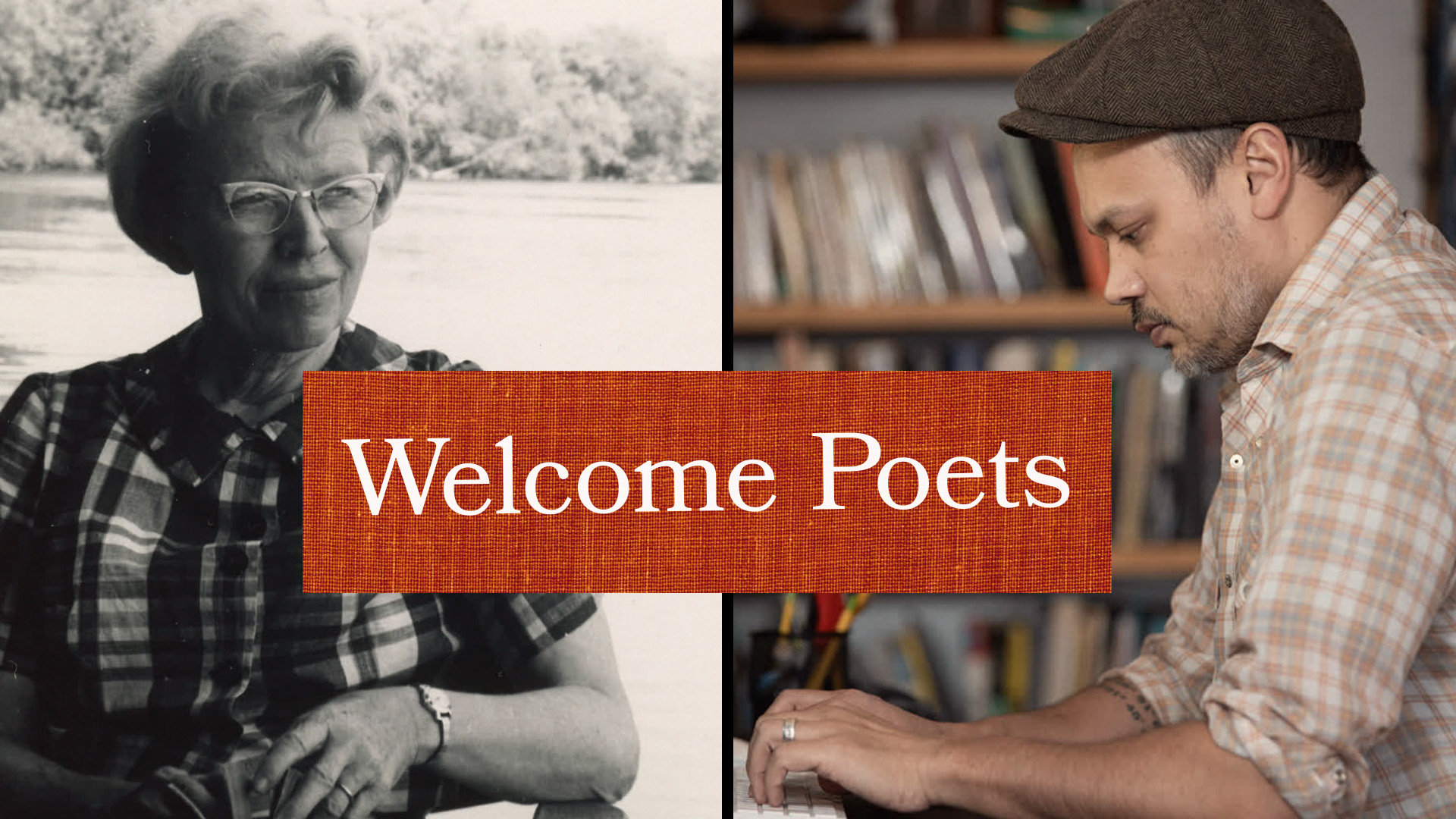
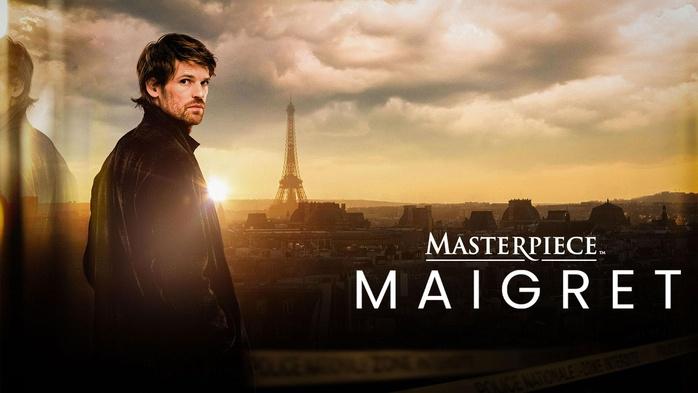



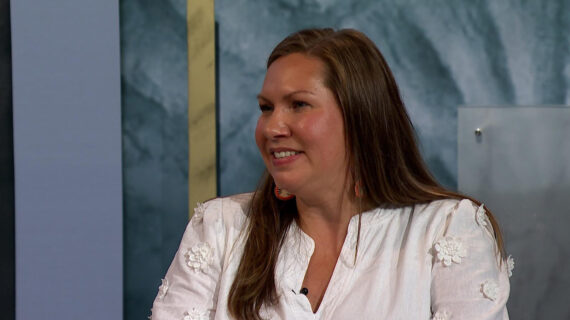
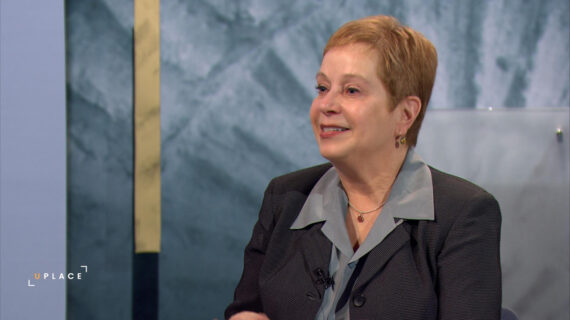

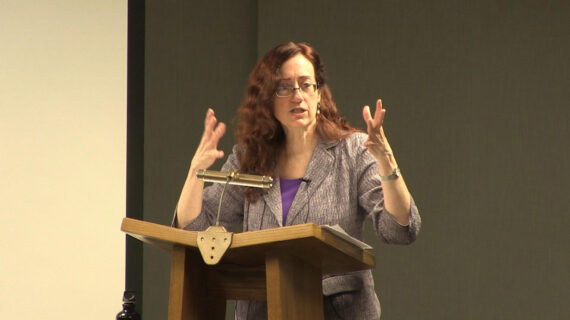
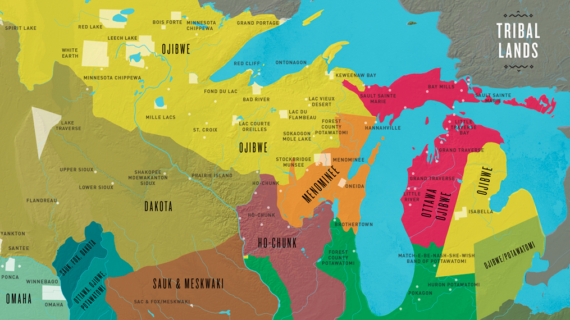
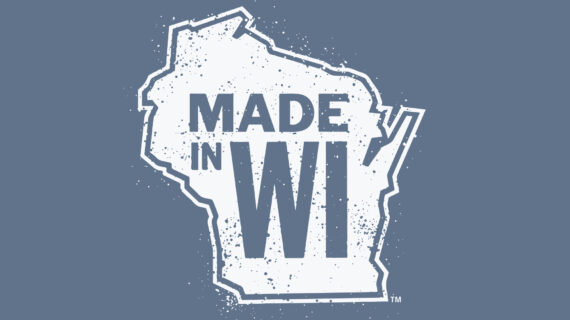

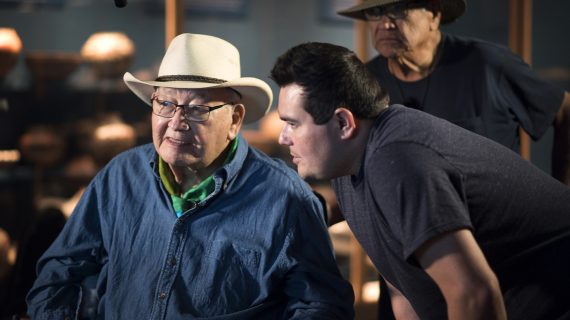

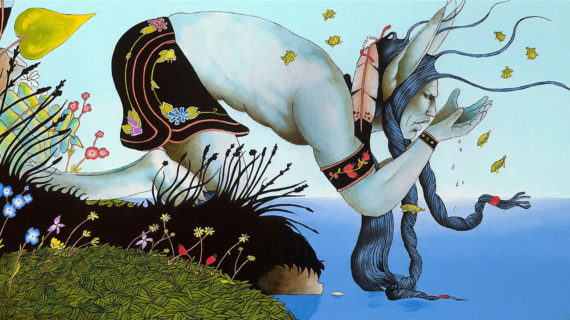

Follow Us